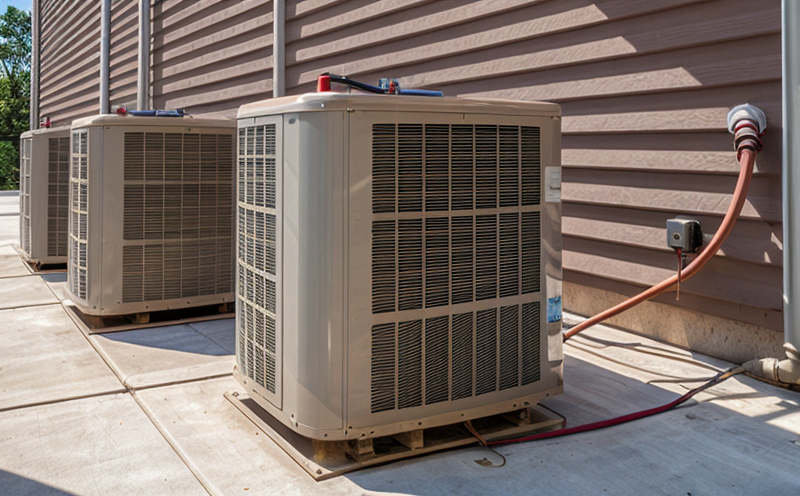EN 16798 Indoor Environmental Input Parameters
The European Standard EN 16798-1:2013 "Indoor environmental input parameters for building energy performance" provides a framework to assess the indoor environment quality in buildings. This standard is critical for ensuring that HVAC and other building systems meet high standards of thermal comfort, air quality, and overall occupant satisfaction.
Developed by CEN (European Committee for Standardization), this standard aims to offer a common basis for calculating energy consumption, carbon dioxide emissions, and other environmental parameters. The focus on indoor environmental input parameters is vital for optimizing building performance, especially in relation to HVAC systems that play a key role in maintaining an optimal internal environment.
Understanding the parameters involved helps quality managers, compliance officers, and R&D engineers ensure their facilities meet regulatory requirements and industry best practices. HVAC systems are at the heart of this endeavor; they influence everything from energy efficiency to occupant health. The standard covers a range of critical parameters such as air temperature, relative humidity, CO2 levels, and noise levels.
Let's delve deeper into how these parameters impact building performance:
Air Temperature: Maintaining an optimal indoor temperature is crucial for occupant comfort. Inadequate temperature control can lead to discomfort and reduced productivity. EN 16798-1 provides guidelines on acceptable ranges for air temperatures, ensuring that HVAC systems are optimized for both heating and cooling.
Relative Humidity: Too high or too low humidity levels can cause health issues and damage to building materials. This standard helps in setting the right levels of relative humidity, which is essential for maintaining a healthy indoor environment.
C02 Levels: CO2 concentration is an indicator of indoor air quality. Higher concentrations suggest inadequate ventilation or over-occupancy, both of which can affect occupant health and comfort. The standard outlines thresholds that ensure acceptable CO2 levels are maintained at all times.
Noise Levels: Noise pollution in buildings can significantly impact the well-being of occupants. This standard provides metrics for acceptable noise levels to ensure a peaceful working or living environment, thus enhancing occupant satisfaction and productivity.
For R&D engineers, compliance officers, and quality managers, understanding these parameters is essential for ensuring that HVAC systems are not only efficient but also contribute positively to the overall indoor environment. This standard serves as a benchmark for achieving these goals by offering clear metrics and guidelines.
Scope and Methodology
The scope of EN 16798-1 includes the calculation of energy consumption, carbon dioxide emissions, and other environmental parameters relevant to HVAC systems in buildings. The standard applies to new or renovated buildings that are intended for residential, commercial, or public use.
For testing purposes, specific methodologies have been outlined to ensure accurate measurement and recording of indoor environmental parameters. These methods include:
- Measurement Points: The standard specifies the placement of sensors for air temperature, relative humidity, CO2 levels, and noise levels.
- Data Collection: Continuous data collection over a specified period to ensure comprehensive coverage.
- Analytical Techniques: Use of recognized analytical techniques to interpret collected data against the standard's parameters.
The methodology also involves the use of calibrated instruments and equipment, ensuring that all measurements are accurate and reliable. Compliance officers and R&D engineers must ensure that these instruments meet international standards such as ISO 9001 for quality management systems.
It is important to note that while EN 16798-1 provides a framework for calculating input parameters, it does not dictate the specific HVAC system designs or technologies. Instead, it supports the integration of these systems into overall building performance assessments.
Customer Impact and Satisfaction
The implementation of EN 16798-1 has a profound impact on customer satisfaction and comfort within buildings. By ensuring that indoor environmental parameters meet the specified standards, HVAC systems can significantly enhance occupant well-being.
Thermal Comfort: The standard ensures that temperature ranges are optimized for maximum comfort, reducing complaints from occupants about overheating or cold spots in a building.
Air Quality: By maintaining acceptable CO2 levels and relative humidity, the standard helps to reduce health risks associated with poor air quality. This is especially important in densely populated areas like offices and schools.
Noise Reduction: The specified noise levels ensure a quieter environment, which can lead to higher satisfaction rates among occupants.
From an operational perspective, compliance with EN 16798-1 helps organizations achieve regulatory requirements and industry best practices. This not only enhances the reputation of the organization but also leads to cost savings in terms of reduced energy consumption and maintenance costs.
Environmental and Sustainability Contributions
The application of EN 16798-1 aligns with broader sustainability goals by promoting efficient use of resources. By optimizing HVAC systems to meet the specified environmental input parameters, buildings can significantly reduce their carbon footprint.
Energy Efficiency: Ensuring that HVAC systems operate within the optimal ranges defined in EN 16798-1 helps to minimize energy consumption. This not only reduces operational costs but also contributes positively to global efforts in reducing greenhouse gas emissions.
Material Durability: Maintaining appropriate relative humidity levels can prevent damage to building materials, thus extending the lifecycle of these structures and reducing waste.
Economic Benefits: Organizations that comply with EN 16798-1 can achieve long-term cost savings through improved energy efficiency. Additionally, they may qualify for government incentives and rebates aimed at promoting sustainable practices.
The standard's focus on environmental parameters is particularly important in today's context of climate change and resource scarcity. By adhering to this standard, buildings contribute significantly to the global effort towards sustainability.





